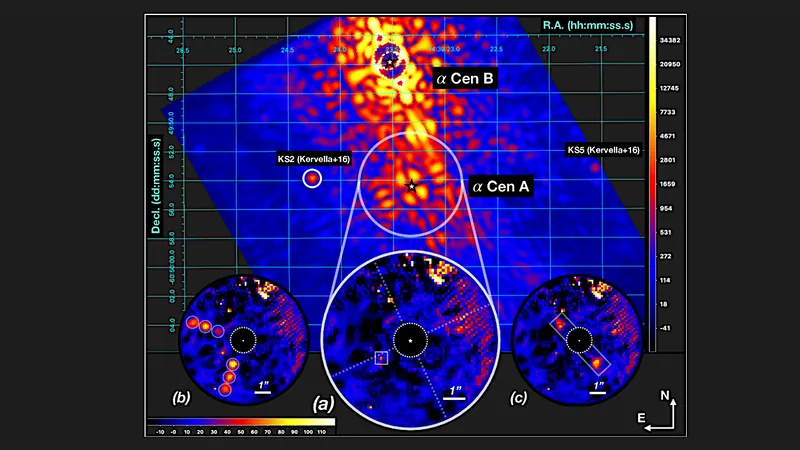
Stellar Secrets: JWST's Hunt for Alien Worlds Near Alpha Centauri A
2025-05-26
Author: Mei
Exciting news from the cosmos! Recent observations conducted using the James Webb Space Telescope (JWST) have unveiled intriguing insights about our closest solar-type star, Alpha Centauri A.
In a groundbreaking study performed in February 2025, astronomers utilized JWST's Mid-InfraRed Instrument (MIRI) to capture images that could shed light on potential planets and exozodiacal dust emissions surrounding this stellar neighbor.
However, not everything went according to plan. The observations faced challenges due to a slight position mismatch during imaging, which affected the clarity of the data.
Despite these hurdles, the research team has established preliminary limits on the presence of both potential planets and the infamous dust disks associated with star systems, commonly known as exozodiacal dust. They targeted exoplanets that could be warmed by the radiation from Alpha Centauri A, which could possibly reach temperatures between 200 to 250 K and have similarities to Jupiter.
Notably, they reached a significant milestone in setting the bar for detecting zodiacal dust emissions, with possible levels estimated at around five to ten times brighter than our own solar system's dust cloud.
Stay tuned for more details, as comprehensive results and analyses from this research will be unveiled in upcoming publications crafted by the team of astronomers involved in this pioneering endeavor.
The quest for alien worlds and understanding cosmic neighborhood dynamics has never been more thrilling! With JWST leading the charge, who knows what extraordinary discoveries lie ahead?



 Brasil (PT)
Brasil (PT)
 Canada (EN)
Canada (EN)
 Chile (ES)
Chile (ES)
 Česko (CS)
Česko (CS)
 대한민국 (KO)
대한민국 (KO)
 España (ES)
España (ES)
 France (FR)
France (FR)
 Hong Kong (EN)
Hong Kong (EN)
 Italia (IT)
Italia (IT)
 日本 (JA)
日本 (JA)
 Magyarország (HU)
Magyarország (HU)
 Norge (NO)
Norge (NO)
 Polska (PL)
Polska (PL)
 Schweiz (DE)
Schweiz (DE)
 Singapore (EN)
Singapore (EN)
 Sverige (SV)
Sverige (SV)
 Suomi (FI)
Suomi (FI)
 Türkiye (TR)
Türkiye (TR)
 الإمارات العربية المتحدة (AR)
الإمارات العربية المتحدة (AR)